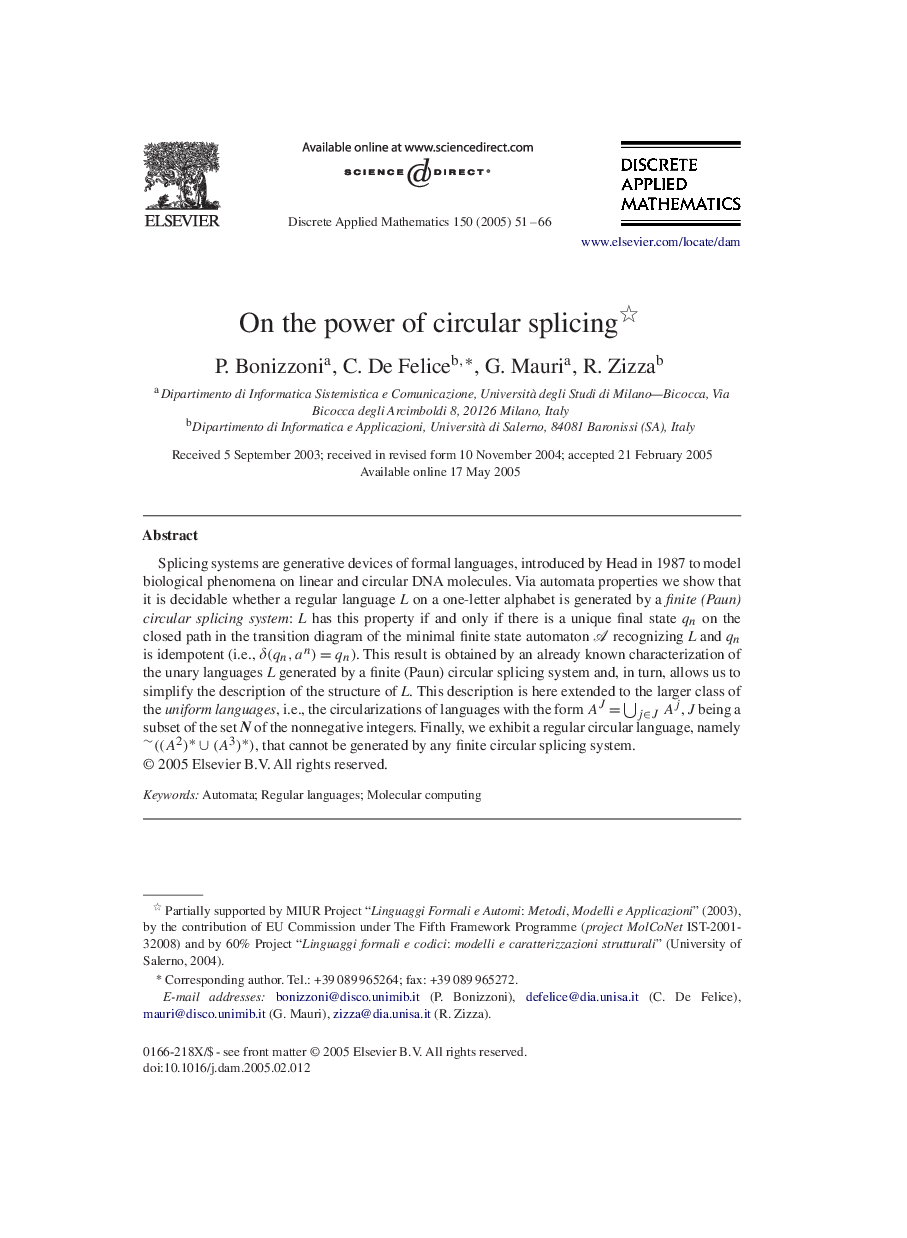| Article ID | Journal | Published Year | Pages | File Type |
|---|---|---|---|---|
| 9655156 | Discrete Applied Mathematics | 2005 | 16 Pages |
Abstract
Splicing systems are generative devices of formal languages, introduced by Head in 1987 to model biological phenomena on linear and circular DNA molecules. Via automata properties we show that it is decidable whether a regular language L on a one-letter alphabet is generated by a finite (Paun) circular splicing system: L has this property if and only if there is a unique final state qn on the closed path in the transition diagram of the minimal finite state automaton A recognizing L and qn is idempotent (i.e., δ(qn,an)=qn). This result is obtained by an already known characterization of the unary languages L generated by a finite (Paun) circular splicing system and, in turn, allows us to simplify the description of the structure of L. This description is here extended to the larger class of the uniform languages, i.e., the circularizations of languages with the form AJ=âjâJAj, J being a subset of the set N of the nonnegative integers. Finally, we exhibit a regular circular language, namely â¼((A2)*âª(A3)*), that cannot be generated by any finite circular splicing system.
Related Topics
Physical Sciences and Engineering
Computer Science
Computational Theory and Mathematics
Authors
P. Bonizzoni, C. De Felice, G. Mauri, R. Zizza,
